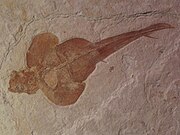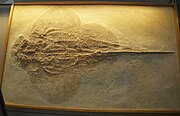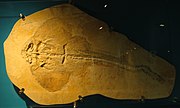
The Lamniformes are an order of sharks commonly known as mackerel sharks. It includes some of the most familiar species of sharks, such as the great white, as well as more unusual representatives, such as the goblin shark and megamouth shark.

Angelsharks are sharks belonging to the genus Squatina. They are the only living members of the family Squatinidae and order Squatiniformes. They commonly inhabit sandy seabeds close to 150 m (490 ft) in depth.
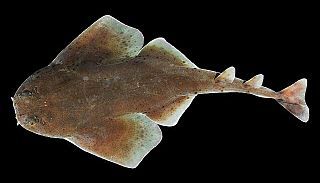
Squatiniformes is an order of sharks belonging to Squalomorphii. It contains only a single living genus Squatina, commonly known as angelsharks. The oldest genus of the order, Pseudorhina is known from the Late Jurassic of Europe. Three other genera, Cretasquatina, Cretascyllium and Parasquatina are known from Cretaceous fossils from North America and Europe, though the placement of Parasquatina in the order has been questioned. All living and extinct members of the order share a similar body morphology with a highly flattened body with enlarged pectoral and pelvic fins suggestive of a bottom-dwelling ambush predator ecology. Teeth have been assigned to the modern genus from the Late Jurassic onwards, but the actual genus assignment of many of these species is unclear. The earliest records that can be assigned with confidence to the modern genus are known from the Early Cretaceous (Aptian) of England.

Hybodus is an extinct genus of hybodont that lived from the Middle Triassic to the Late Cretaceous periods. Species closely related to the type species Hybodus reticulatus lived during the Early Jurassic epoch. Numerous species have been assigned to Hybodus spanning a large period of time, and it is currently considered a wastebasket taxon that is 'broadly polyphyletic' and requires reexamination.
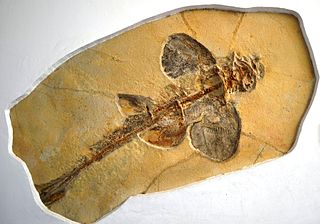
Protospinax is an extinct genus of cartilaginous fish from the Early Jurassic to Early Cretaceous of Europe and Russia. The type species, P. annectans, was found in the Solnhofen limestones of southern Bavaria. Formerly known from only two specimens, further museum specimens of P. annectans were discovered at the Museum of Comparative Zoology of Harvard University in the 1990s, having been misidentified as Squatina and Heterodontus. Five more species, all known only from isolated teeth, are also assigned to Protospinax.

Hybodontiformes, commonly called hybodonts, are an extinct group of shark-like cartilaginous fish (chondrichthyans) which existed from the late Devonian to the Late Cretaceous. Hybodonts share a close common ancestry with modern sharks and rays (Neoselachii) as part of the clade Euselachii. They are distinguished from other chondrichthyans by their distinctive fin spines and cephalic spines present on the heads of males. An ecologically diverse group, they were abundant in marine and freshwater environments during the late Paleozoic and early Mesozoic, but were rare in open marine environments by the end of the Jurassic, having been largely replaced by modern sharks, though they were still common in freshwater and marginal marine habitats. They survived until the end of the Cretaceous, before going extinct.
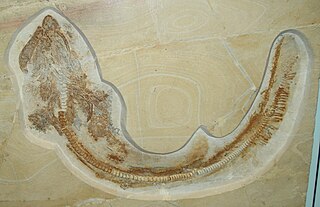
Paraorthacodus is an extinct genus of shark. It a member of the family Paraorthacodontidae, which is either placed in Hexanchiformes or in Synechodontiformes. It is known from over a dozen named species spanning from the Early Jurassic to the Paleocene, or possibly Eocene. Almost all members of the genus are exclusively known from isolated teeth, with the exception of P. jurensis from the Late Jurassic-Early Cretaceous of Europe, which is known from full body fossils from the Late Jurassic of Germany, which suggest that juveniles had a robust body with a round head, while adults had large body sizes with a fusiform profile. There was only a single dorsal fin towards the back of the body without a fin spine. The dentition had teeth with a single large central cusp along with shorter lateral cusplets, which where designed for clutching. The teeth are distinguished from those of Synechodus by the lateral cusplets decreasing in size linearly away from the central cusp rather than exponentially as in Synechodus.
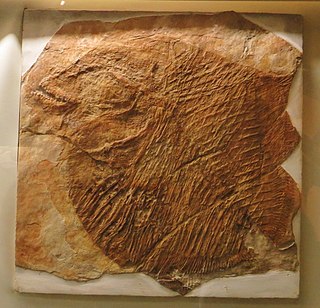
Coelodus is an extinct genus of marine and possibly freshwater pycnodont fish. It contains only one definitive species, C. saturnusHeckel, 1854, from the Late Cretaceous of Slovenia. Other species from the Late Jurassic to the Eocene have also been attributed to this genus based on isolated dental elements, but their assignment to Coelodus is uncertain, and this genus likely represents a non-monophyletic wastebasket taxon. A potential diagnostic trait is a prearticular tooth row with three regular highly elongated teeth.
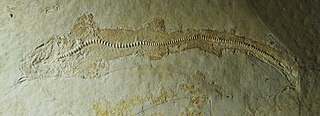
Macrourogaleus is a genus of shark from the Late Jurassic Solnhofen Limestone. It is closely related to Paraorthacodus, and placed in the same family Paraorthacodontidae, The body is slender, with a single dorsal fin and a elongate caudal fin. The anal fin is also very elongate. The pectoral and pelvic fins are noticeably rounded.

Meristodonoides is an extinct genus of hybodont. The type species is M. rajkovichi, which was originally a species in the genus Hybodus. The species, along with other Hybodus species such as H. butleri and H. montanensis, was reassigned to Meristodonoides by Charlie J. Underwood and Stephen L. Cumbaa in 2010. The species is primarily known from remains from the Cretaceous of North America, spanning from the Aptian/Albian to Maastrichtian, making it one of the last surviving hybodont genera, though records of the genus likely extend as far back as the Late Jurassic, based on an undescribed skeleton from the Tithonian of England, and fragmentary teeth from the Kimmeridgian of Poland, England and Switzerland. Other remains of the genus are known from the Coniacian of England, the Aptian-Albian of France, and the Campanian of European Russia. The morphology of the teeth suggests an adaptation to tearing prey. Fossils from the Western Interior Seaway suggest that it preferred nearshore marine environments, being absent from deeper-water areas, with it likely also being able to tolerate brackish and freshwater conditions.

Orthacodontidae is an extinct family of sharks. It is disputed as to whether it belongs to the modern shark order Hexanchiformes, or the extinct order Synechodontiformes. It contains two genera. Some other authors included it in Lamniformes.

Asteracanthus is an extinct genus of hybodont, known from the Middle Jurassic (Bathonian) to the Early Cretaceous (Valanginian).

Synechodontiformes is an extinct order of prehistoric shark-like cartilaginous fish, known from the Permian to the Paleogene. They are considered to be members of Neoselachii, the group that contains modern sharks and rays.

Paracestracion is an extinct genus of heterodontiform sharks from Early Jurassic to Early Cretaceous-aged rocks of England, France, Germany and Luxembourg. The genus was first described in 1911 by Ernst Hermann Friedrich von Koken in Karl Alfred von Zittel.

Synechodus is an extinct genus of shark belonging to the family Palaeospinacidae and order Synechodontiformes. It is known from 16 species primarily spanning from the Late Triassic to Paleocene. The dentition is multicusped and was used for grasping. Several species are known from skeletal remains, including the species Synechodus ungeri from the Late Jurassic of Germany, which shows that it was relatively short with large pectoral fins and a proportionally large head with a round snout. This species is suggested to have reached a body length of 30–40 centimetres (0.98–1.31 ft). Skeletal remains are also known of the species Synechodus dubrisiensis from the Cretaceous of Europe. A skeleton of an indeterminate species is also known from the Early Cretaceous (Albian) of France, with a body length of around 70 centimetres (2.3 ft). Synechodus is suggested to have had two dorsal fins that lacked fin spines, though the number of dorsal fins is unknown in Synechodus ungeri.

Lepidotidae is an extinct family of fish, known from the Jurassic and Cretaceous periods. Most species were originally assigned to the genus Lepidotes which was long considered a wastebasket taxon. Cladistic analysis has indicated that they are close relatives of gars, with both being members of the order Lepisosteiformes. Members of the family are known from both marine and freshwater environments. Their bulky body morphology and small median fins suggests that they were slow-moving fish that were capable of performing fine movements in order to grasp prey. Lepidotes sensu stricto had peg-like grasping marginal teeth and crushing palatal teeth, and is known to have consumed small crustaceans, while Scheenstia had low rounded crushing marginal teeth, indicating a durophagous diet.

Palaeocarcharias is an extinct genus of shark, known from the Jurassic of Europe. It has only a single named species, Palaeocarcharias stromeri, which is known from exceptionally preserved specimens from the Late Jurassic (Tithonian) of Germany and France. Isolated teeth of indeterminate species from England extend the range of the genus back to the Middle Jurassic (Bathonian). Morphologically, it closely resembles carpet sharks (Orectolobiformes), and is around 1 metre (3.3 ft) in total body length. However, it shares greater similarities in tooth development with mackerel sharks (Lamniformes), including the absence of orthodentine, and has been suggested to the earliest known member of the Lamniformes or a member of a sister group to the Lamniformes. A 2018 study suggested that should be classified as the sole member of the order Palaeocarchariiformes, but a subsequent 2023 study questioned this and favoured placement in Lamniformes.

Strophodus is an extinct genus of durophagous hybodont known from the Triassic to Cretaceous. It was formerly confused with Asteracanthus.

Egertonodus is an extinct genus of shark-like hybodont fish. It includes E. basanus from the Jurassic of Europe and North Africa and Cretaceous of North America, North Africa and Europe, and E. duffini from the Middle Jurassic of England. Indeterminate remains of the genus have been reported from the Early Cretaceous of Asia. E. basanus is known from preserved skull material, while E. duffini is only known from teeth. The genus is distinguished from Hybodussensu stricto by characters of the skull and teeth. E. basanus, the most common species, is thought to have reached 1.5 m in length. E. fraasi from the Late Jurassic of Germany, known from a poorly preserved full body fossil, was placed in Egertonodus in one study, but this has been subsequently questioned by other authors, due to strong differences in tooth morphology from the type species. Fossils have been found in freshwater and lagoonal environments.

Sphenodus is an extinct genus of shark. It is placed as a member of the extinct family Orthacodontidae, which is either considered to be a member of the extinct order Synechodontiformes, or the modern shark order Hexanchiformes. 29 species have been described, though some of these are likely synonyms, which span from the Early Jurassic (Sinemurian) to Paleocene (Danian). Most species are only known from isolated teeth, though the species Sphenodus macer and Sphenodus nitidus from the Late Jurassic of Germany are known from skeletons. These suggest that it was relatively large, with a body length of 2–3 metres (6.6–9.8 ft), with a fusiform body with a single dorsal fin placed posteriorly without a fin spine. The teeth of Sphenodus consist of a single long, narrow central cusp, with much smaller lateral cusplets. Species of Sphenodus are thought to have been actively swimming predators.

